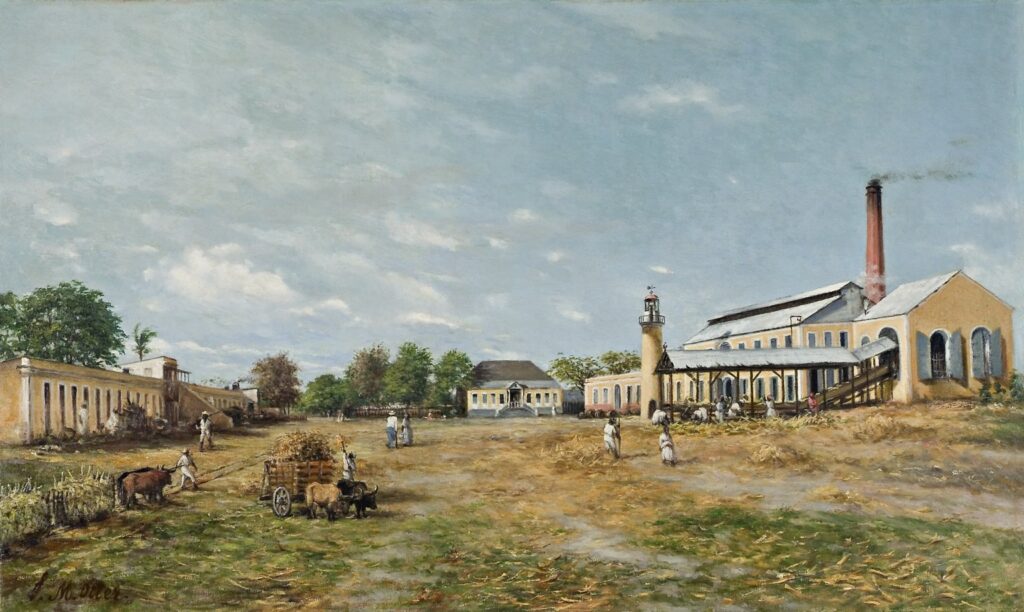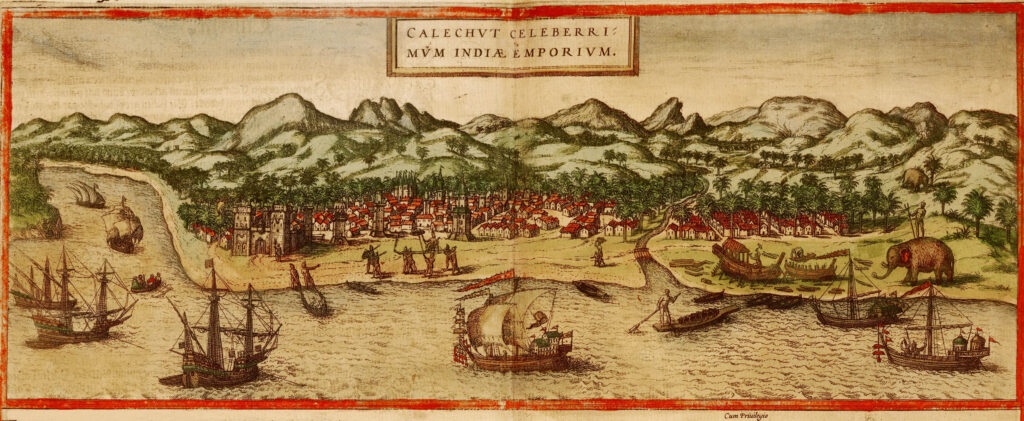
The Columbian Food Exchange
Why Columbus’s Voyages Mattered
Columbus, of course, was not the first European to discover the New World. The Norse established settlements in North America around the year 1000. Others may have reached the New World even earlier. Yet those early voyages made no difference.
Why, then, did Columbus’s voyages matter?
Because broader circumstances ensured that his voyages would not be a transient event. It reflected three factors: the rise of European nations in competition with one another for trade; the rise of a merchant class hungry for trade and new markets; and the cutting off of traditional European trading routes as a result of the expanding power of the Ottoman Empire.
European monarchies were desperate to find ways to finance the state and especially the military. Overseas trade offered one possible solution. Merchants, with financing from banks in Italy and Germany, were eager to seize on trading opportunities. And equally important, the rise of the Ottoman Empire cut off earlier trading routes to the Far East.
By the late fifteenth century, after the Ottoman Empire had captured Constantinople, the center of eastern Christianity, the time was ripe for a new approach. Portugal led the way, exploring and developing trading relations along Africa’s western coast. Portugal also thought that it could develop ties with a mythical Christian kingdom in Africa led by a ruler known as Prester John. In 1488, the Portuguese explorer Bartolomeu Dias sailed around the southernmost tip of Africa in 1488, and reached the Indian Ocean, opening a new route to India and China.
Meanwhile, Spain, inspired by the Portuguese example, also sought to identify new trading opportunities. It was widely known that the Earth was round. Columbus estimated that the Earth was half its actual size and was given the opportunity to test his theory.

Thinking Comparatively
The Columbian Exchange
The Columbian Exchange refers to the global diffusion of plants, animals, diseases, and human populations after 1492. Geographical zones which had been previously isolated now became interconnected with profound consequences for the diet, the natural environment, health, and the size and distribution of the human population.
As a result of the Columbian Exchange, the human population, overall, grew rapidly. But in the Americas, the spread of disease pathogens resulted in the decline of 50 to 90 percent in the indigenous population by 1650. In Africa, population growth helped to make the Atlantic slave trade possible. The slave trade, in turn, resulted in the loss of many men of prime working age in west and central Africa, producing a population that was sharply skewed along lines of sex and age.
The Columbian Exchange also contributed to the growth in Europe of a modern consumer economy. Sugar, coffee, tea, and tobacco would be consumed not just by elites but by a mass consumer market. Each of these products, it should be noted, is addictive and psychoactive, with an impact on brain functioning. Each is a stimulant; coffee, tea, and tobacco also increase the mind’s ability to concentrate.
The Great Food Exchange
Imagine Italian food without tomatoes or Hungarian cuisine without paprika or Korea without spicy kimchi, or Indian or Thai cuisine without spicy chili peppers or Switzerland or the Netherlands without chocolate.
The Columbian exchange introduced sugar, coffee, soybeans, oranges, and bananas to the New World; potatoes, corn, and cacao to Europe; cassava (also known as manioc), corn and yams to Africa. Green beans, spicy peppers, pineapple, peanuts, turkey, and vanilla, all from the New World, broadened Old World diets. Meanwhile, chickens, goats, pigs, and sheep as well as wheat, chickpeas, and a host of vegetables drastically altered New World diets.
No crop had a greater impact than the lowly potato, since an acre and a half could support a family for a year. In Ireland, where farmers might consume as much as ten pounds of potatoes a day, spuds allowed the population to nearly triple between the mid-eighteenth and mid-ninteenth centuries. But when a blight, which arrived from the New World, devastated the potato crop beginning in 1845, nearly a million people in Ireland died and another million migrated.
The Great Food Exchange not only resulted in significant improvements in caloric and nutritional intake, fueling rapid population growth, but also contributed to the growth of national identity, as specific foods became associated with national cultures. Various foods were used in radically different ways. Potatoes were distilled into Vodka in Russia, served cold in salads in Germany, boiled in Ireland, and fried in France.

History Through…
…Food: Sugar
People’s love of sweetness had a huge impact on history. From its origins in New Guinea around 8000 B.C., sugar cane spread to the Philippines and India, and then moved westward along with Arab traders and eventually found its way to Europe around 996 A.D. Cultivation requires tropical conditions with much water and no cold spells. Hence, it could be raised in northern Africa and in parts of the Mediterranean (i.e., Crete and Cyprus), but yields were low. This made sugar rare and expensive in Europe.

The Spanish and Portuguese experimented with raising sugar in other places, notably on islands off the coast of Africa. It was there that Columbus learned about growing sugar cane. He would introduce sugar cane to the islands in the Caribbean that he encountered.
Cultivating and processing sugar cane is such arduous work that no one is willing to do it voluntarily. Working cane, harvesting, milling, and cooking the juice is arduous physical labor. Slave labor or indentured servants were integral parts of the sugar trade.
Sugar was the single most important force behind the growth of New World slavery.
Sugar cane, which had been extremely rare and costly and had been used as a medicine, became an essential part of the diet, consumed in great quantities even by the poor. Sugar not only provided cheap calories, allowing people to work harder, it also provided workers with a reason to work hard.

Historical Facts & Fiction
Spices
It was the quest for spices that led Vasco de Gama to sail around the tip of Africa to India and Ferdinand Magellan to seek to navigate the globe. Today, we take spices for granted, but prior to the seventeenth century, spices were extremely costly, so costly that some merchants adulterated spices with silver shavings.

Because they came from the far east, spices were associated with the exotic. Spices were also laden with religious and medical significance. Spices were used as therapeutics, tonics, and even as aphrodisiacs. Doctors prescribed spices as a way to balance the “humors” in food. Salt was associated with fertility and provided the root for the word “salacious,” which refers to something that appeals to the sexual imagination.
Due to spices’ rarity and expense, elites used spices heavily to demonstrate their wealth. Contrary to popular belief, spices were not generally used to preserve food though they did mask the taste of rotten meat. Spices were used for flavoring, not food preservation. Food was typically preserved through drying or salting.

Podcast
Select “Play” to listen to a podcast entitled, “Food in America.”

Click here to read the transcript.